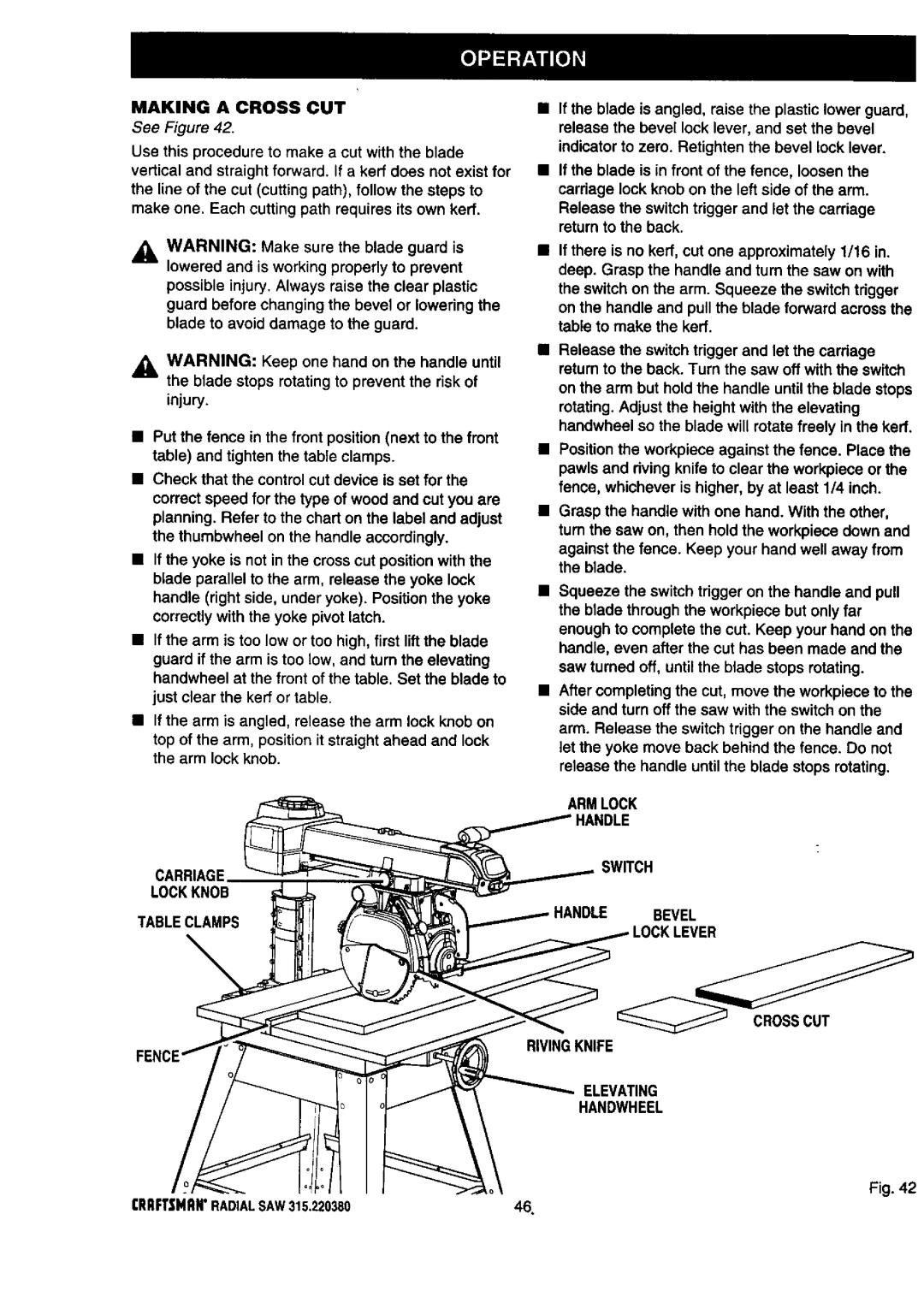
MAKING A CROSS CUT
See Figure 42.
Use this procedure to make a cut with the blade vertical and straight forward. If a keff does not exist for the line of the cut (cutting path), follow the steps to make one. Each cutting path requires its own kerr.
,_ WARNING: Make sure the blade guard is lowered and is working properly to prevent
possible injury. Always raise the clear plastic guard before changing the bevel or lowering the blade to avoid damage to the guard.
,_ WARNING: Keep one hand on the handle until the blade stops rotating to prevent the risk of
injury.
•Put the fence in the front position (next to the front table) and tighten the table clamps.
•Check that the control cut device is set for the correct speed for the type of wood and cut you are planning. Refer to the chart on the label and adjust the thumbwheel on the handle accordingly.
•If the yoke is not in the cross cut position with the blade parallel to the arm, release the yoke lock handle (right side, under yoke). Position the yoke correctly with the yoke pivot latch.
•If the arm is too low or too high, first lift the blade guard if the arm is too low, and turn the elevating handwheel at the front of the table. Set the blade to just clear the kerf or table.
•If the arm is angled, release the arm lock knob on
top of the arm, position it straight ahead and lock the arm lock knob.
CARRIAGE_
LOCKKNOB
TABLECLAMPS
•If the blade is angled, raise the plastic lower guard, release the bevel lock lever, and set the bevel indicator to zero. Retighten the bevel lock lever.
•If the blade is in front of the fence, loosen the carriage lock knob on the left side of the arm.
Release the switch trigger and let the carriage return to the back.
•If there is no kerr, cut one approximately 1/16 in. deep. Grasp the handle and turn the saw on with the switch on the arm. Squeeze the switch trigger on the handle and pull the blade forward across the table to make the kerr.
•Release the switch trigger and let the carriage return to the back. Turn the saw off with the switch
on the arm but hold the handle until the blade stops rotating. Adjust the height with the elevating handwheel so the blade will rotate freely in the kerr.
•Position the workpiece against the fence. Place the pawls and riving knife to clear the workpiece or the fence, whichever is higher, by at least 1/4 inch.
•Grasp the handle with one hand. With the other, turn the saw on, then hold the workpiece down and
against the fence. Keep your hand well away from the blade.
•Squeeze the switch trigger on the handle and pull the blade through the workpiece but only far enough to complete the cut. Keep your hand on the handle, even after the cut has been made and the saw turned off, until the blade stops rotating.
•After completing the cut, move the workpiece to the side and turn off the saw with the switch on the arm. Release the switch trigger on the handle and let the yoke move back behind the fence. Do not release the handle until the blade stops rotating.
ARMLOCK
SWITCH
BEVEL
LOCKLEVER
CROSSCUT
RIVINGKNIFE
ELEVATING
HANDWHEEL
Fig. 42
tRRFTSHRN'RADIALSAW315.22038046,
